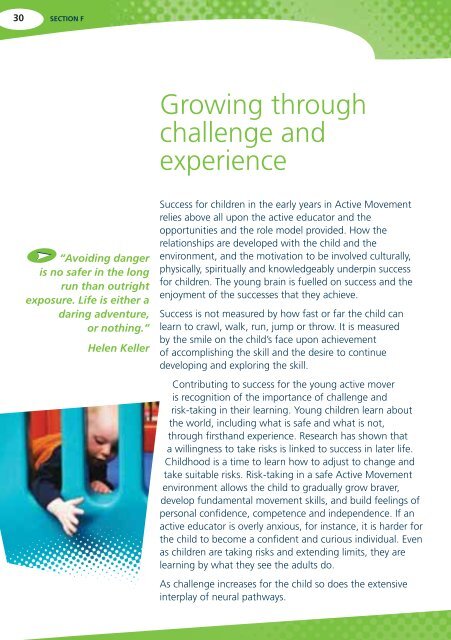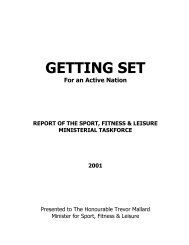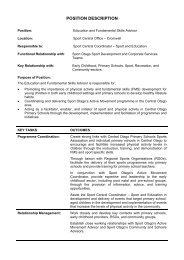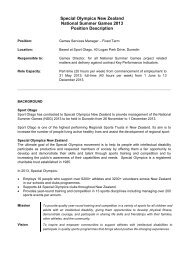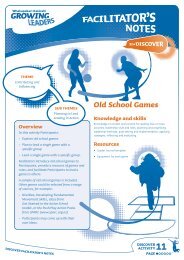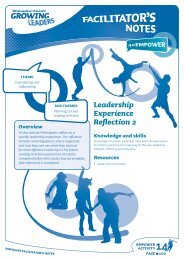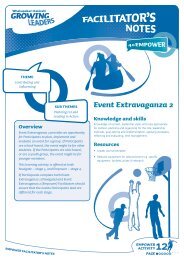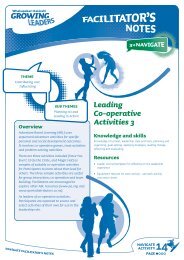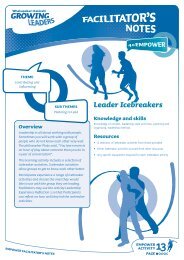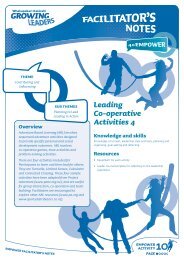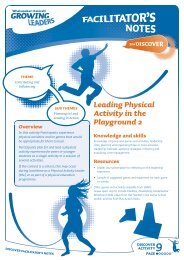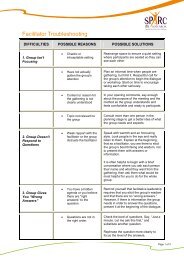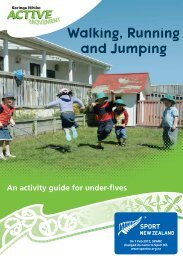An Introduction to Active Movement Koringa Hihiko - Sport New ...
An Introduction to Active Movement Koringa Hihiko - Sport New ...
An Introduction to Active Movement Koringa Hihiko - Sport New ...
Create successful ePaper yourself
Turn your PDF publications into a flip-book with our unique Google optimized e-Paper software.
30 SECTION F<br />
Growing through<br />
challenge and<br />
experience<br />
“Avoiding danger<br />
is no safer in the long<br />
run than outright<br />
exposure. Life is either a<br />
daring adventure,<br />
or nothing.”<br />
Helen Keller<br />
Success for children in the early years in <strong>Active</strong> <strong>Movement</strong><br />
relies above all upon the active educa<strong>to</strong>r and the<br />
opportunities and the role model provided. How the<br />
relationships are developed with the child and the<br />
environment, and the motivation <strong>to</strong> be involved culturally,<br />
physically, spiritually and knowledgeably underpin success<br />
for children. The young brain is fuelled on success and the<br />
enjoyment of the successes that they achieve.<br />
Success is not measured by how fast or far the child can<br />
learn <strong>to</strong> crawl, walk, run, jump or throw. It is measured<br />
by the smile on the child’s face upon achievement<br />
of accomplishing the skill and the desire <strong>to</strong> continue<br />
developing and exploring the skill.<br />
Contributing <strong>to</strong> success for the young active mover<br />
is recognition of the importance of challenge and<br />
risk-taking in their learning. Young children learn about<br />
the world, including what is safe and what is not,<br />
through firsthand experience. Research has shown that<br />
a willingness <strong>to</strong> take risks is linked <strong>to</strong> success in later life.<br />
Childhood is a time <strong>to</strong> learn how <strong>to</strong> adjust <strong>to</strong> change and<br />
take suitable risks. Risk-taking in a safe <strong>Active</strong> <strong>Movement</strong><br />
environment allows the child <strong>to</strong> gradually grow braver,<br />
develop fundamental movement skills, and build feelings of<br />
personal confidence, competence and independence. If an<br />
active educa<strong>to</strong>r is overly anxious, for instance, it is harder for<br />
the child <strong>to</strong> become a confident and curious individual. Even<br />
as children are taking risks and extending limits, they are<br />
learning by what they see the adults do.<br />
As challenge increases for the child so does the extensive<br />
interplay of neural pathways.


